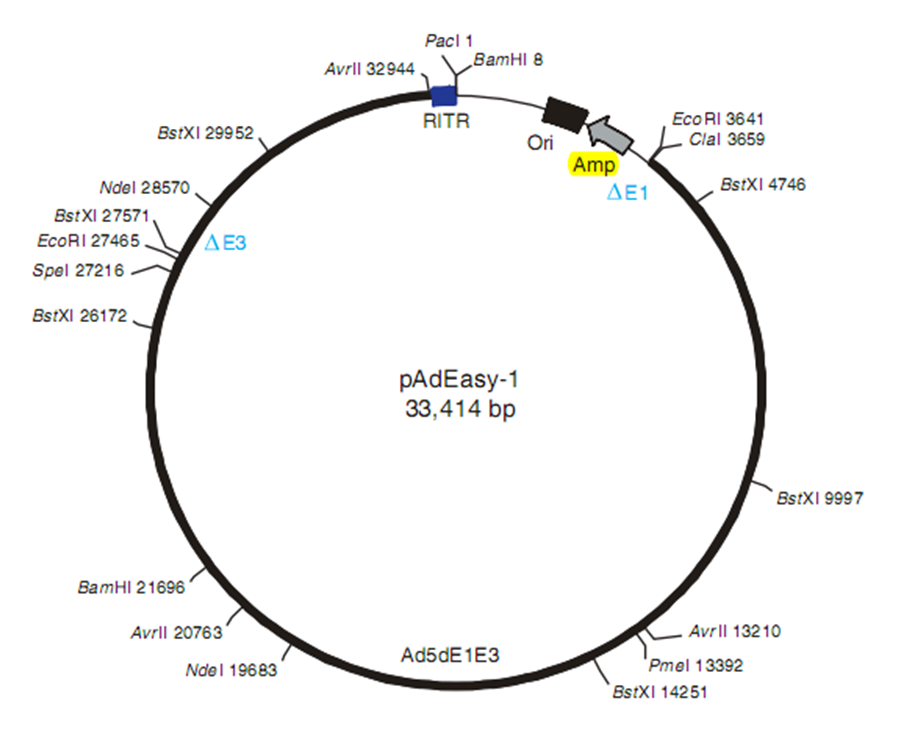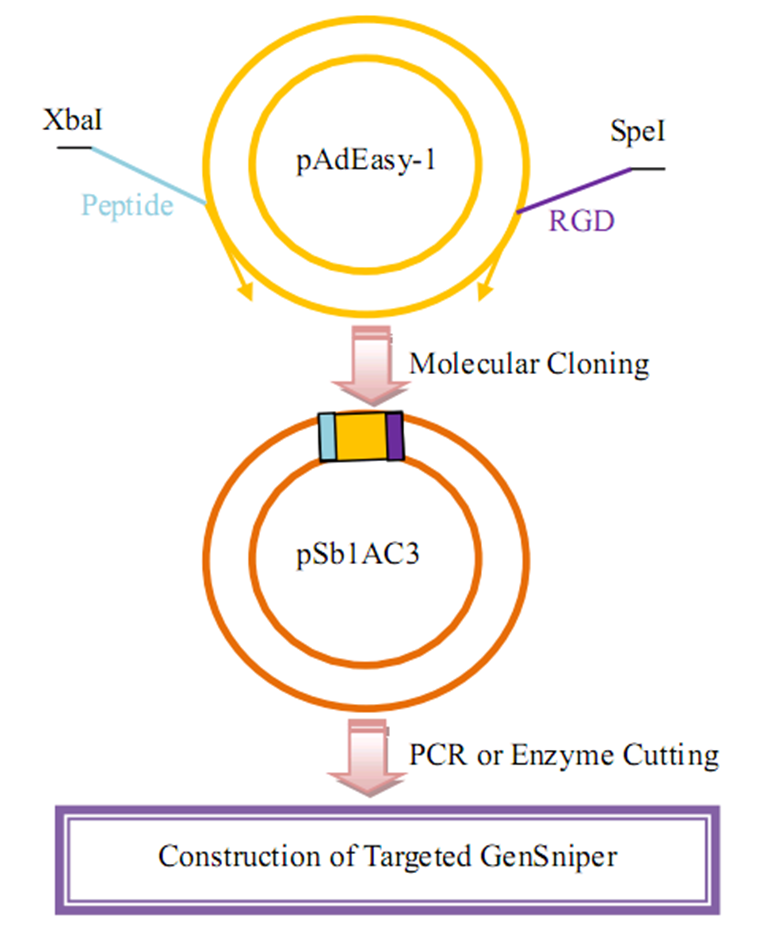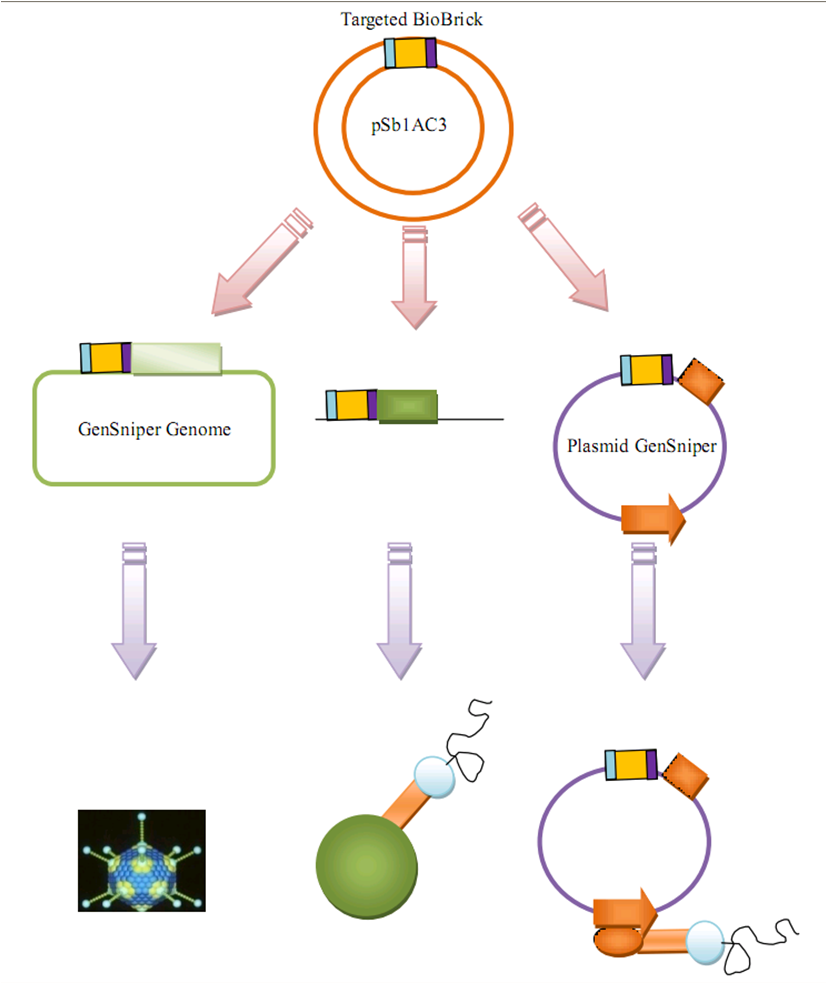Team:Tsinghua/Experiment3
From 2009.igem.org
Contents |
Standardized Targeted Biobrick Construction
As suggested in our project description, we aim at constructing a gene therapy vector with the targeted module able to be altered according to clinical use. Thus the targeted biobrick should be easy to manipulate for differentiated peptides with different specificity.
On the basis of this purpose, we build a biobrick encoding the "Peptide-Fiber shaft-RGD" sequence. This biobrick can be incorporated upstream a variety of proteins with different function. In this way, the targeted function can be modulized.
pAdEasy1, encoding the whole genome of adenovirus, is used for targeted biobrick cloning. The sequences of specific peptide (we use TAT peptide in our experiment) and RGD domain will be incorporated via PCR.
The biobrick principle of synthetic biology allows us to characterize Targeted Biobrick function and apply Targeted Biobrick onto any functional proteins of desired function. For example, we can engineer Targeted Biobrick to a DNA binding protein to build a plasmid gene therapy vector as one of our dry lab project. This principle is similar to the established approach of zinc finger nuclease.
Having the targeted biobrick at hand, we will generally conduct three groups of experiment for further characterization of our device.
Targeted Biobrick-pC Fusion
After the synthesis and identification of the GenSniper genome, we will genetically fused the open reading frame of C in bacteriophage lambda and modified fiber shaft from adenovirus.
Targeted Biobrick-eGFP Fusion
According to the decoupling principle of synthetic biology, we will also incorporate the targeted biobrick with eGFP before testing the specificity of the GenSniper with targeted biobrick.
 "
"


